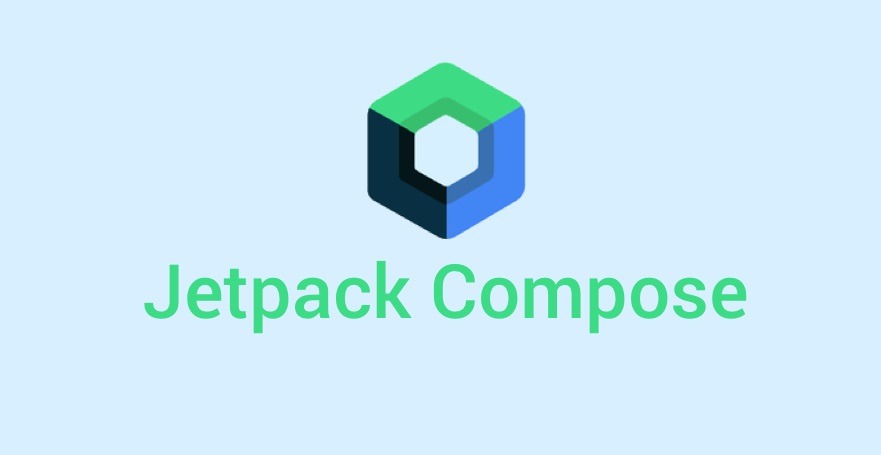Revolutionizing Android UIs With Jetpack Compose: A Comprehensive Guide

UI, or User Interface, is the core aspect of app development and determines how users perceive your application.
Interestingly, however, the concept of UI is ever-adaptive, changing how users will perceive an application with the introduction of new tech and features.
Designing robust UI for Android phones can lead to user satisfaction and improve your brand’s reputation, leading to high revenue generation. However, developers now have the option to streamline the process using Jetpack Compose, a modern toolkit, to design and build top-notch Android UIs that improve performance across devices.
But how do you use Jetpack Compose for Android UI development?
Let’s find out while we learn more about Jetpack Compose in the following sections of the blog.
Understanding The Basics Of Jetpack Compose
When it comes to Android app development, the user interface (UI) is an important factor that immediately influences user experience. Traditionally, designing UIs for Android apps concerned XML-primarily based layouts, a method that frequently posed demanding situations for wordiness, maintenance, and versatility. Google launched an exceptional toolkit in 2021 known as Jetpack Compose, which the builders can use to build Android UIs.
Jetpack Compose is a modern framework that enables developers to design native Android interfaces. Its fundamental functionality is based on a declarative programming method that removes the difficulties of UI creation by focusing on what the UI should express rather than how to build it.
By embracing an intuitive syntax and providing sturdy functions, Jetpack Compose can enhance developer performance, streamline the improvement technique, and empower the creation of dynamic and attractive consumer interfaces for Android packages.
Advantages Of Jetpack Compose For Android UI Development
Jetpack Compose is a revolutionary toolkit introduced by Google that promises to revolutionize Android UI development. Here are some top advantages of Jetpack Compose that every developer must know:
Composable UI Components
Jetpack Compose introduces the concept of composable features, which serve as constructing blocks for UI elements. These functions leverage UI logic and can be blended and reused to create complicated UIs with minimal effort. The program’s composable capabilities allow developers to achieve greater modularity and scalability in their codebase, facilitating less difficult collaboration and code reuse.
Declarative UI
One of Jetpack Compose’s standout features is its declarative nature. In contrast to the imperative approach of XML layouts, Jetpack Compose allows developers to define UI elements more intuitively and concisely. This declarative syntax enables developers to describe the desired UI state, leading to code that is easier to understand, maintain, and modify.
State Management
Managing your app’s UI is a fundamental improvement, and Jetpack Compose considerably simplifies the process. By storing UI states within composable features using country variables, developers can easily update the UI in reaction to personal interactions or record changes. This streamlined control method complements code readability and decreases the likelihood of bugs associated with state inconsistency.
Reactive UI Updates
Jetpack Compose employs a reactive programming version, wherein the UI routinely updates in response to modifications in the programmed structure. This reactive paradigm guarantees that the UI remains synchronized with the underlying records, supplying customers with a seamless and responsive experience. Jetpack Compose enhances developer productivity and code robustness by eliminating the need for guide UI updates.
Performance Optimization
Performance is paramount in improving Android apps, and Jetpack Compose is designed with overall performance in mind. Its composable structure allows green UI rendering, resulting in seamless animations and quicker response time. Additionally, Jetpack Compose leverages the state-of-the-art advancements in Android’s rendering pipeline to optimize performance across various devices.
Advanced Techniques In Jetpack Compose For Android UI Development
Jetpack Compose has redefined the landscape of mobile app development, offering developers multiple features for building user interfaces. While many are familiar with its fundamental features, several lesser-known tricks and functionalities can significantly enhance your development workflow and the quality of your apps. These include:
Subtle Animations With AnimatedVisibility
The “AnimatedVisibility” composables allow you to animate the visibility of UI elements seamlessly. This is particularly useful for creating smooth transitions when showing or hiding components, adding a touch of sophistication to your app’s user experience without much effort.
Fine-tuning Layouts With Modifier.required size
Sometimes, you need precise control over the size of UI elements. Enter “Modifier.requiredSize”, which ensures that components maintain a specific size, regardless of their content or constraints. This feature is useful when you need a pixel-perfect alignment or consistent dimensions across different screen sizes and resolutions.
Flexibility With Custom Layouts
While Jetpack Compose offers a rich set of integrated layouts, there are times when you may need greater flexibility or specialized preparations. With Layout Composables, you may create custom layouts tailored to your app’s requirements, opening up infinite possibilities for innovative and progressive UI designs.
Unlocking Visual Creativity With Canvas And GraphicsLayer
The “Canvas” and “GraphicsLayer” APIs empower you to unharness your creativity by manipulating portraits and growing custom visual outcomes. Whether you’re crafting problematic animations, designing custom shapes, or including delightful flourishes in your UI, those functions provide you with the equipment to deliver your vision to lifestyles with pixel-ideal precision.
Enhanced Touch Interactions With InteractionSource
Handling touch events and gestures can be complex, especially in apps with rich interactivity. Enter “InteractionSource,” a powerful tool for easily implementing complex touch interactions. From swipe gestures to pinch-to-zoom functionality, this feature simplifies capturing and responding to user input, making your app more intuitive and engaging.
Seamless Integration With ConstraintLayout
If you’re migrating from traditional XML-based layouts to Jetpack Compose, you’ll be pleased to know that ConstraintLayout is fully compatible with Compose. With the “ConstraintLayout-Compose” library, you can leverage the familiar features of ConstraintLayout within your Compose projects, ensuring a smooth transition and preserving your existing layout logic.







